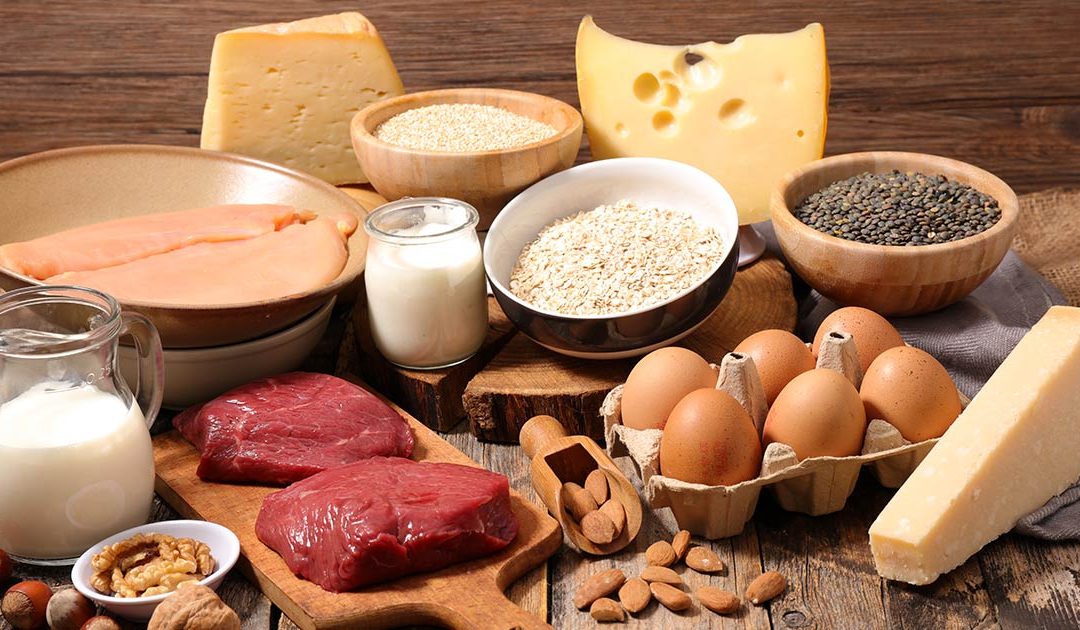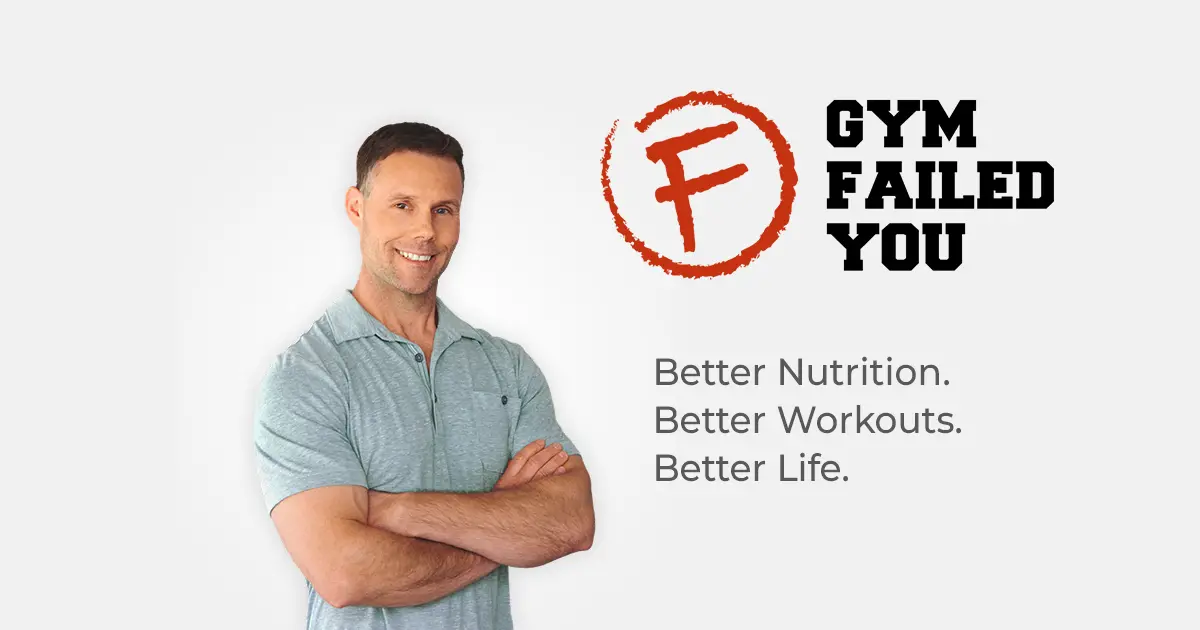You likely already know that protein supplies us with the necessary building blocks for life. These building blocks are known as amino acids. And they’re crucial for so many of our physiologic functions, including:
- Tissue repair
- Gene transcription
- Hormone precursors
- Growth
- Enzymes
- Antibodies
- Acid-base balance
- Fluid balance
- Transport proteins
- Blood clotting
- Visual pigments
- Energy
Glynn’s Guide
Takeaways That Won’t Fail You
- Protein deficiency is more prominent in developing and third world countries.
Muscle wasting, a weakened immune system, and an inability to heal quickly are some of the first signs of protein deficiency. - Vegans well versed in combining the correct incomplete protein sources will prevent a protein deficiency.
- Animal protein will always yield a complete protein source.
- There’s no right or wrong way to obtain one’s protein needs. What makes that individual feel best is the right way for them.
Is there such a thing as a protein deficiency?
Yes, there is such a thing as protein deficiency. It’s not as prevalent in industrialized nations, but it is still an issue in developing nations and third world countries.
What is protein deficiency?
There is a term called protein-energy malnutrition (PEM). The two are so closely related.
In other words, if one is deficient in calories, they are likely deficient in protein. This is less of a problem in adults. And more of an issue in children except for very specific populations. We’ll discuss that more further in the article.
What causes protein deficiency?
There are three populations that stand out when discussing protein deficiency.
- Third world nations that lack a supply of nutritious food leading to protein-energy malnutrition. Children are more profoundly affected by protein-energy malnutrition.
- Elderly individuals who do not consume enough food or whole protein.
- Vegetarians who have not educated themselves well on combining the right incomplete proteins.
Patients in renal failure may also elicit symptoms of protein deficiency. Improper kidney function is one of the few issues that can change one’s ability to manage protein. So, these individuals are required to severely minimize their protein consumption.
Also, it can be seen in pregnant and lactating women who don’t eat enough. They of course, have a higher requirement for energy and protein.
What are the symptoms of protein deficiency?
- Low energy levels initially
- Muscle and fat loss.
- Prolonged infections.
What is the result of a dietary protein deficiency?
A prolonged deficiency in protein can lead to:
- Growth retardation.
- An inability to heal.
- A reduced ability to fight infection.
- Bands of “depigmented” hair (think stripes of hair with and without one’s normal color)
- A child’s inability to develop higher cognitive processes
- In extreme cases, Kwashiorkor, Marasmus (see below), and edema.
Where is protein deficiency a problem?
Protein deficiency is more common in third world countries, but wealthier nations are not exempt. Underprivileged regions also see an increase in protein deficiency.
It’s interesting that different regions of the world (Asia, Africa, South America, North America) all elicit different protein-deficient outcomes. This is specific to culturally different foods. And what’s available to eat.
Adults in wealthier nations with PEM are more likely to be suffering from a disease of some sort (HIV, cancer, etc.).
Another group that is potentially affected by protein deficiency is the elderly. In a state of protein deficiency or PEM, elderly patients are not well equipped to heal. Cederholm states “Improvement of PEM is accompanied by a decline in inflammatory activity.” In other words, with adequate protein and nutrients, there’s less inflammation from a particular disease.
There has been a tiny upward trend in protein deficiencies within the upper-middle class in children whose parents only use grain-based milks. This is an easy fix and generally recognized within the medical community.
What is Protein Deficiency Kwashiorkor?
Kwashiorkor is one long term variation of a protein deficiency or malabsorption issue. It is most commonly recognized by edema in the arms and legs. There are other symptoms, but this simple understanding is enough for this article.
It is more commonly associated with children.
What is Protein Deficiency Marasmus?
Marasmus is more of a generalized wasting. Skin and bones if you will. It’s what you think of when picturing a starving person.
If you recall from earlier, a deficiency in energy intake goes hand in hand with a protein deficiency.
Protein deficiency marasmus is not associated with any particular age group.
Is too little protein dangerous?
Yes, too little protein is dangerous over a prolonged period. A weakened immune system and muscle wasting are among the first signs of too little protein. Here are a few things to look for:
- Low energy levels initially.
- Muscle and fat loss.
- Prolonged infections.
- An inability to heal wounds.
- A reduced ability to fight new infections.
How long does it take to recover from protein deficiency?
This varies based on the severity of the deficiency. But do understand that it is dangerous to abruptly add large amounts of protein back into the diet. It can lead to pulmonary edema and cardiovascular insufficiency. Please save this for the medical community.
What about complete and incomplete protein sources?
A complete protein food source includes all essential amino acids. Whereas an incomplete protein source is lacking one or more of the essential amino acids.
Typically protein sources derived from animals are complete sources. And plant-based proteins are incomplete (not all). It’s easy to combine sources to make something complete. I’ll speak more on that issue below.
What are the essential amino acids?
Essential amino acids are those that our bodies cannot produce on their own. We can use different incomplete sources of proteins to build over half of the amino acids.
There are nine essential amino acids. Some of those, we can make, just not in a large enough quantity. Therefore, they fall under the umbrella of essential amino acids.
If we don’t get enough essential amino acids, our body will break down lean tissue to build them. Our bodies tend to rate metabolic processes, immuno processes, and hormonal processes as more important than the maintenance of lean tissue. I’m in agreement!
What are branched-chain amino acids (bcaa)?
Branched-chain amino acids are three of the nine essential amino acids.
One responsibility of the branched-chain amino acids in muscle protein synthesis. Read that as growth and repair. They are known as:
- Leucine
- Isoleucine
- Valine
They’re called bcaa’s because their chemical structure has a side chain of additional carbons. Simply put, they look different from all the other amino acids.
You can learn more about bcaa’s in my article BCAA vs Whey Protein: The Definitive Guide [Save Money].
Does protein have to come from an animal?
No. Many of the foods we eat including grains and vegetables contain protein. But it may not always be a complete protein.
That means it contains an incomplete protein missing some essential amino acids. But, combining two incomplete protein sources that have complementary amino acids profiles can make a complete protein.
I refuse to take a stand as to whether protein from animals or plants is more healthy. There are several pros and cons to both sides. What matters most is what makes you as an individual feel best. There are ways to make both sides of the fence healthy and successful.
We’re all different and that’s a good thing!
How does a vegetarian get enough protein?
Many of the plants we consume (starches to vegetables) contain some of the essential amino acids. There are plenty of guides outlining the specific amino acids that make up different plant-based foods.
The key is to combine those foods low in a few particular amino acids with others that are high in those amino acids. Outlining how to do this is not the objective of this article.
Our bodies will metabolize lean tissue to make up for the missing amino acids. So, if a vegetarian is deficient, it takes a long time to show a protein deficiency. What does tend to show up is a loss of muscle tissue when all essential amino acids are not obtained in the diet.
How common is protein deficiency in Vegans?
Again, because there’s generally not a deficiency in energy intake, a deficiency takes a long time to present itself. But it can happen.
Those vegans who are not well versed in combining the right incomplete protein sources can become deficient.
But all in all, it’s not that common.
Can you eat too much protein?
This is a hot topic and one I enjoy debating. Technically, no, you can’t eat too much protein if you’re healthy. I’m not concerned with fads or what this or that documentary said. I’m only interested in quality peer-reviewed research on the topic.
If you are in renal failure, it’s a different situation. Otherwise, there’s no real ceiling. You can read more about this topic in my article The Surprising Facts About How Much Protein Is Too Much Protein.
A note about older textbooks
The world of nutrition has rapidly changed in the last few decades. It’s astonishing how much has changed even since I was in college from 1993-2000. Back then, we barely knew anything about our guts microbiome.
We had no idea of its importance. This leads me to comment on older textbooks and literature about nutrition or nutritional sciences.
As I look through some of my old textbooks, I’m finding information that was taught that is no longer valid. This is why it’s so important when discussing nutrition to keep up to date on the latest findings. And I mean quality peer-reviewed research.
FAQs on Protein Deficiency
What does protein deficiency feel like?
It’s usually associated with very low food intake, so fatigue is a common first sign. But don’t we all feel real fatigue sometimes. So the initial signs for a vegan can take awhile. If you’re taking a really long time to heal or are frequently sick, that may also be a sign.
Can protein deficiency cause fatigue?
Yes, this is usually the first sign.
Are vegetarians protein deficient?
Very few actually are deficient in protein. A vegan who is not complimenting the correct incomplete proteins can show signs of muscle wasting and a weakened immune system.
Can protein deficiency cause muscle pain?
A deficiency in protein will prevent the healing of sore muscles from DOMS. But that may be the only circumstance that causes muscle pain.
Can protein deficiency cause hair loss?
So far, no real conclusions have been drawn as to whether low protein can increase hair loss. I would not consider this something worth concerning one’s self with.
References & Resources
Tommy Cederholm MD, PhD, Christina Jägren MD, Kjell Hellström MD, PhD, Outcome of protein-energy malnutrition in elderly medical patients, The American Journal of Medicine
Volume 98, Issue 1, January 1995, Pages 67-74.
Ranjit Kumar Chandra, Protein-Energy Malnutrition and Immunological Responses, The Journal of Nutrition, Volume 122, Issue suppl_3, March 1992, Pages 597–600.
Anupama Chawla, Denease Francis, Sherin Daniel, Michelle Tobin, Kwashiorkor in Upper Middle Class Suburbia in the United States (FS17-02-19), Current Developments in Nutrition, Volume 3, Issue Supplement_1, June 2019, nzz035.FS17–02–19.
Constans, T., Bacq, Y., Bréchot, J.‐F., Guilmot, J.‐L., Choutet, P. and Lamisse, F. (1992), Protein‐Energy Malnutrition in Elderly Medical Patients. Journal of the American Geriatrics Society, 40: 263-268.
Guo, Emily L, and Rajani Katta. “Diet and hair loss: effects of nutrient deficiency and supplement use.” Dermatology practical & conceptual vol. 7,1 1-10. 31 Jan. 2017.
Kar, B.R., Rao, S.L. & Chandramouli, B.A. Cognitive development in children with chronic protein energy malnutrition. Behav Brain Funct 4, 31 (2008).
de Onís, M et al. “The worldwide magnitude of protein-energy malnutrition: an overview from the WHO Global Database on Child Growth.” Bulletin of the World Health Organization vol. 71,6 (1993): 703-12.
McBride, Judy. “Subtle larceny: too little protein in elders.” Agricultural Research, vol. 43, no. 7, 1995, p. 12+.
Jose M. Soriano, Ana Rubiniac, María Morales-Suarez-Varela, et al, Aflatoxins in organs and biological samples from children affected by kwashiorkor, marasmus and marasmic-kwashiorkor: A scoping review, Toxicon, Volume 185, 15 October 2020, Pages 174-183.
Wu, G. Amino acids: metabolism, functions, and nutrition. Amino Acids 37, 1–17 (2009).




